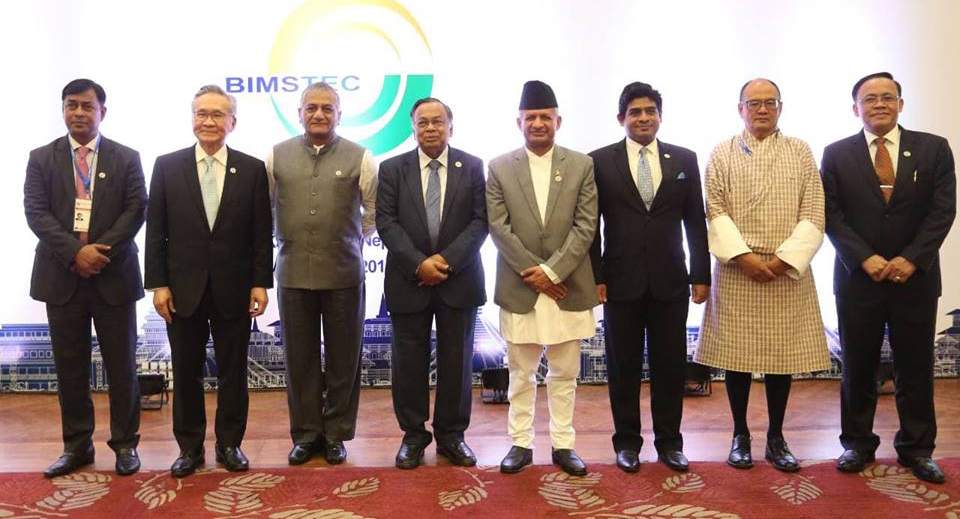Nepal’s economically active population between 15-59 years of age is 57.0 percent according to data given in Final economic survey 2015/16 by Government of Nepal. This population density in the country are those who should be involved in earning, trading, and workers such as skilled, unskilled, semi skilled who are paid for daily, monthly wages for themselves and their family. They should be required to contribute to the national economy.
Out of those populations, the unemployment rate was 46% on 2008 A.D and if we look back on 2004 A.D, it was 42% in Nepal ( as cited in CIA, TheWorld Factbook). If we would have a figure for unemployment rate during fiscal year 2015/16, this might have grown up in the country after post earthquake and slowly have started decreasing unemployment rate again as the momentum starts building up for economic activities, but not adequate up to the threshold which Nepal needs at the moment seeing through in terms of remaining population density.
Because, the country has failed to generate employment opportunities at home, “about 1,500 workers are leaving the country everyday in search of foreign employment,”(Economic survey, 2015).
From aboard works, they send remittance to the country. Looking at the Table below from the same source above :
Table 1:
Remittance Inflows in fiscal years.
2009/10 2010/11 2011/12 2012/13 2013/14 2014/15*
Remittance Inflows
(Rs in Billion )
231.7 253.6 359.6 434.6 543.3 371.0
Ratio to GDP 19.4 18.5 23.5 25.7 28.0 –
Source: Nepal Rastra Bank( as cited in Final economic survey, 2015)
It shows the rising trends of contribution of remittance in the national economy of Nepal. Remittance from aboard is playing an important role as increasing GDP per capita (PPP) which the table below shows as follows:
Table 2:
GDP per capita(PPP) of Nepal yearly
2015 Earlier Least Before
GDP per capita(PPP) 2312 USD 2278 USD 1198 USD
Retrieved from http://www.tradingeconomics.com/nepal/indicators
So, there has been a rise in Purchasing Power Parity which defines the propensity to consume goods and services by the Nepalese people. As a result, the needs, wants and desires of Nepalese have been fulfilled by their growing expenditures. There has been a huge demand of goods and services produced from aboard since Nepal couldn’t able to produce all the commodities, utilities and services required within the country. As Nepal follow globalization and liberalization by entering into WTO, signing since 1995 A.D.
Trade deficit is on increasing trends every year due to rise of imports and failure to boost exports through enhancement of competitive capacity of exports. Despite the trade deficit, the current account on an average has been in surplus for the last 10 years due to high inflow of remittance.
Rise of imports indicated increased in consumption and below in table shows increasing Gross consumptions in the country.
Table 3:
Shows the gross consumption in ratio to GDP of Nepal.
Fiscal Years 06/07 07/08 08/09 09/10 10/11 11/12 12/13 13/14 14/15
Gross Consumption/GDP 90.2 90.2 90.6 88.6 86.0 89.0 89.4 89.1 88.6
( as cited in Economic Survey, 2015)
An increase of consumption has boosted up country’s revenue by taxation such as import duties revenue in case of imported goods and taxes on goods and services which are also the indicators of mass consumptions inside the country through imports of goods and services.
Revenue generation is good for the country in one term but looking into future growth, sustainability and achieving benefits from status of entry into liberalization of economy, we must produce goods and services locally in which we are lagging behind. This inability to raise in the context of challenges of Nepal, it has been impacted critically on employment generation as well as we are losing space in the international arena in terms of identity, nationality and uniqueness.
Even though there are no adequate employment in the country, rise in consumptions of imported goods and services prevailing due to rise in people’s purchasing power capacity from the funds from aboard that their family members have sent to Nepal in the form of remittance has been predominately seen in Nepal.
Looking into consumption pattern, where Nepalese have been spending their earned income from aboard can be generally as foods, clothes, electronic gadgets, entertainment and luxuries items, land, property etc. Furthermore, the pattern shows the rise of service sector in the country. Literacy rate seems to be rising and the trends of construction of buildings and houses are also on rise. Entertainment industries seems to grow further such as Centers, Malls, and Recreational activities, Gaming zone, Holiday packages which all in turn building up momentum for Tourism Industry.
In conclusion, for the past 10 years’ unemployment status in Nepal seems to push for migration aboard for work and through the remittance inflow by them into the country leading to mass consumption pattern of goods and services which ultimately has enhanced government income and flourishes the Tourism Industries in Nepal.
References
Economic survey(2015), Ministry of Finance, Government of Nepal. Retrieved from http://www.mof.gov.np/uploads/document/file/Economic%20Survey%202015-16%20-%20English_20160812062624.pdf
CIA, The world Factbook. Retrieved from https://www.cia.gov/library/publications/the-world-factbook/fields/2129.html
Trading economics, Nepal/Economic indicators. Retrieved from http://www.tradingeconomics.com/nepal/indicators


